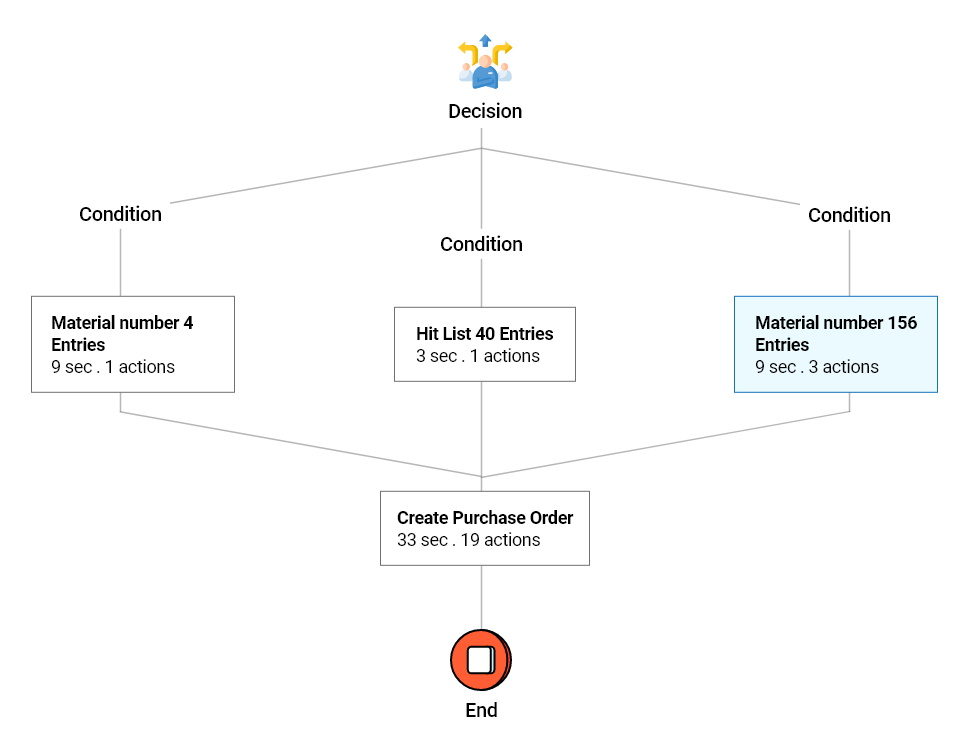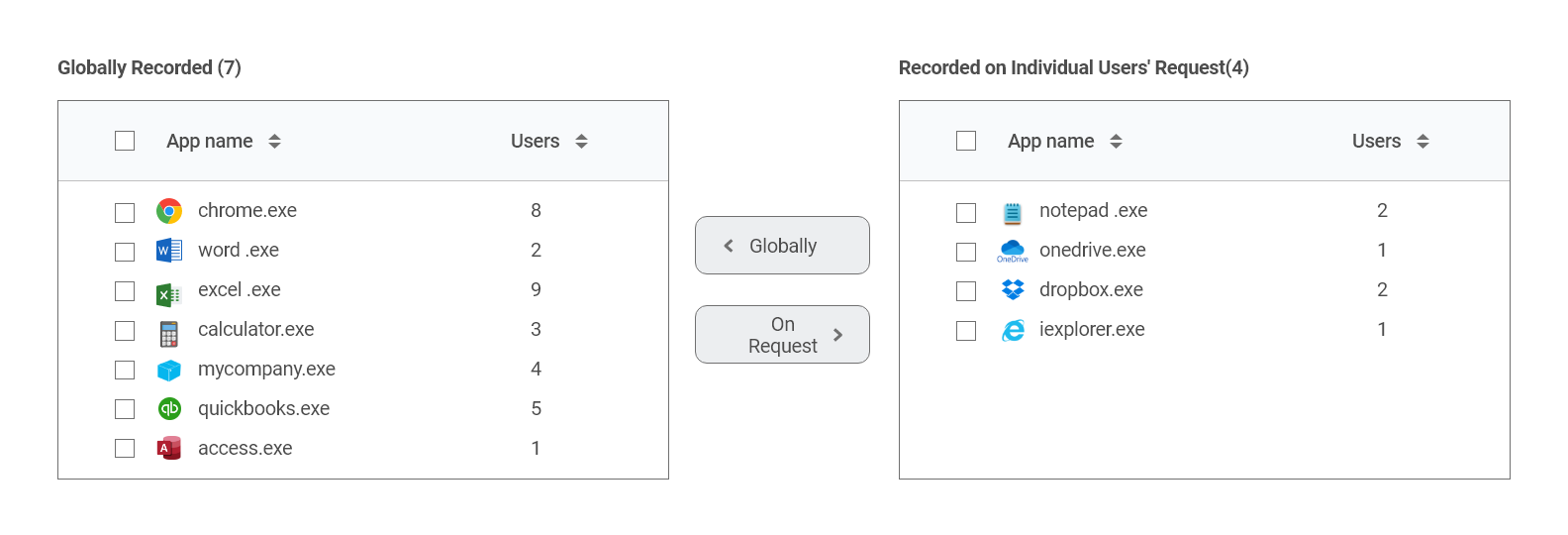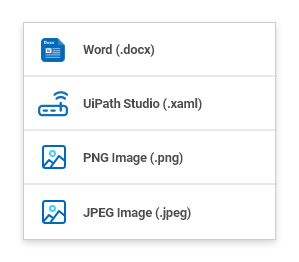Accelerating Your Automation Pipeline with UiPath Task Mining
- Featured Insights
- May 24, 2023
What Is UiPath Task Mining?
UiPath Task Mining is a powerful tool for identifying and analyzing repetitive tasks that are good candidates for automation. It is capable of capturing data about user actions on their computer screen, such as mouse clicks, keyboard inputs, and application usage. Thus, it also holds the capacity to capture data from various sources, such as RPA robots and APIs (Application Programming Interfaces), to provide a comprehensive view of the end-to-end process.
Task Mining creates a visual map of the tasks, which shows a detailed view of how tasks are performed in practice and the sequence of steps involved in completing the task. It also provides analytics and reporting capabilities that allow organizations to identify trends and patterns in user behavior. These visual maps can then be used to identify areas of inefficiency, areas of process improvements, and opportunities for automation, helping organizations to accelerate their automation pipeline.

Organizations Could Employ Two Approaches To UiPath Task Mining:
1. Assisted Task Mining in UiPath:
It enables users to create a more detailed and accurate visual map of their processes by adding context and metadata to the data captured by the tool. The data collected from the user’s computer is analyzed to create a visual map of the steps involved in completing a task. However, this data alone may not provide enough context for the user to fully understand the process or identify areas for optimization or automation.
Assisted Task Mining allows users to add context to the captured data by adding annotations, comments, and tags to specific steps in the process. These annotations can include information like the step’s purpose, the expected outcome, and any dependencies or inputs required for the step to be completed.
By adding this additional information, users can create a more detailed and accurate visual map of the process, which can help them identify areas for improvement and optimization. For example, users can identify redundant steps, take longer than necessary, or require manual intervention. Assisted Task Mining also includes collaboration features, allowing multiple users to contribute to the same project and share their insights and annotations. These annotations can include information like the step’s purpose, the expected outcome, and any dependencies or inputs required for the step to be completed.
2. Unassisted Task Mining in Uipath:
It enables users to automatically capture and analyze their computer activities without the need for additional input or annotations. By employing machine learning algorithms, it automatically examines the data and detects patterns and anomalies in user behavior. This functionality proves invaluable for organizations dealing with large volumes of data, as it swiftly identifies opportunities for optimization and automation, eliminating the need for manual analysis.
Machine learning algorithms excel at recognizing patterns in data, including frequently executed actions and time-consuming steps. This valuable insight facilitates the identification of areas ripe for optimization and automation, resulting in heightened efficiency and productivity. Additionally, Unassisted Task Mining can detect anomalies in user behavior, such as infrequently performed steps or errors during processes. This capability aids organizations in recognizing areas that may benefit from additional training or support.

How Is UiPath Task Mining Different From UiPath Process Mining?
They are two distinct products from UiPath that serve different purposes in the automation lifecycle. UiPath Task Mining is a tool that helps organizations identify and analyze user tasks and workflows to identify automation opportunities.
It captures user actions and generates process maps, enabling the identification of repetitive tasks suitable for automation. Conversely, UiPath Process Mining is a tool that analyzes current business processes to pinpoint inefficiencies and areas for improvement. It leverages real-time data to create visual representations of processes, uncovering bottlenecks, variations, and opportunities for automation.

Benefits Of UiPath Task Mining:
- Efficient Data Collection: UiPath Task Mining uses a lightweight agent to collect data about user actions, to minimize the impact on system resources and ensures efficient data collection.
- Accurate Process Mapping: The visual map created by UiPath Task Mining accurately captures the steps involved in completing a task, providing a comprehensive view of the process.
- Analytical Capabilities: UiPath Task Mining provides analytics and reporting capabilities that allow organizations to identify trends and patterns in user behavior. This can be used to identify areas where employees may be struggling or where there are opportunities for improvement.
- Integration with Other Tools: UiPath Task Mining can integrate with other tools, such as UiPath Studio, to provide a comprehensive automation solution. For example, the data captured by UiPath Task Mining can be used to create automation workflows in UiPath Studio.
- Cloud-Based: UiPath Task Mining is a cloud-based solution, meaning organizations do not need to invest in additional hardware or infrastructure to use the tool.
- Identifying low-hanging fruit: Task Mining can quickly identify processes well-suited for automation, such as repetitive or manual tasks. By automating these processes first, organizations can quickly realize the benefits of RPA and build momentum for further automation efforts.
- Analyzing process inefficiencies: Task Mining can also identify areas of a process that are inefficient or require manual intervention. Organizations can improve efficiency and reduce errors by addressing these inefficiencies through automation.
- Prioritizing automation efforts: Task Mining provides a detailed visual map of the steps involved in completing a task, which can be used to prioritize automation efforts. Organizations can achieve the most significant impact with their automation efforts by focusing on the most critical or time-consuming steps.
- Collaborating on automation projects: Task Mining includes collaboration features that allow multiple users to contribute to the same project and share their insights and annotations. This can help teams work together to identify areas for optimization and ensure that the automation pipeline is aligned with organizational goals.
- Compliance Monitoring: UiPath Task Mining can help organizations ensure compliance with regulations and policies by identifying areas where processes may not comply.
- No Technical Expertise Required: Task Mining is also easy to use and requires no technical expertise. This makes it accessible to a wide range of users, including business analysts and process owners.
